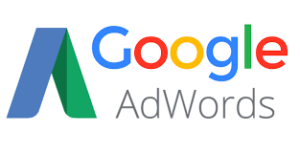Why Ignore Efforts to Improve Your Sales Process?
You like money, right? Is it a good idea to burn it? Obviously not.
So why do so many small business owners do it?
Yes, I’m saying it: Not doing the work to improve your sales process is the same as burning money.
If sales is the key to all success of a small business, doesn’t it make sense to be as robust as possible in Improving your Sales Process? That’s what this post is about. Remember:
You cannot grow without being wrong.
This is one of my favorite quotes, because it immediately resets me from my natural instinct to always defend my “rightness”, which is almost always wasted energy.
Much better to pursue every place that I’m wrong, because these discoveries, like mining gold, are the beginning of the growth I’ll experience afterward.
Let’s look at some common fallacies for small business owners around sales and the sales process:
 Small Business Owner Fallacy Statement #1: The “I Tried SEO, Didn’t Work” Fallacy
Small Business Owner Fallacy Statement #1: The “I Tried SEO, Didn’t Work” Fallacy
“I tried (insert digital marketing outlet, like SEO) and it didn’t work”.
I hear this often, and I’ve come to apply a different definition to the phrase, namely:
“I put half-hearted effort into this outlet (like Social Media Marketing or Blogging), never committed to any phase of it, failed once and quit. I also measured exactly zero things in the process, to further guarantee that I will never experience anything positive from what I spent my hard-earned money on”. Brutal, but true.
Here are a couple more versions of the same “Try”:
“Try” Facebook by putting 500 bucks into a hastily assembled campaign, get no results, then declare it “failed.”
“Try” Adwords by putting a few hundred dollars into a campaign that has no research and no understanding of how clicks are auctioned, lose all that money, then declare that Adwords “doesn’t work”.
True, those failed, but you didn’t actually TRY it.
Truly trying something means putting a plan together, then measuring it.
Let’s look at another fallacy statement.
Small Business Owner Fallacy Statement #2: The “I’m Doing Just Fine without SEO” Fallacy
“I’ve been using the same tactics in marketing for ten years, and my results have been decreasing for a long time. Rather than hire a pro to tell me why, I’m just satisfied with the failure and will continue in the same manner”.
 That’s wrong. Just like this haircut.
That’s wrong. Just like this haircut.
Again, harsh, but far too common to not be mentioned.
Why do we small business owners do this? Yes, I include myself, because I’ve caught myself in these same fallacies. Improvement in your Sales Process takes what Larry Bossidy and Ram Charan call “Robust Dialogue” in their outstanding book “Execution: The Discipline of Getting Things Done” (read it, or get the audio book, it’s great. BTW, this is listed on my post “21 Books that can Help Any Small Business Owner”).
How to Improve Your Sales Process (Online and Off)
The first thing you have to do for truly effective Sales Process Improvement is to commit.
Commit to asking hard questions and facing the answers.
Commit to whatever route you’re going to take. Mark your path, be crystal clear about your goals, measure the results, then do it again.
Here’s a simple process to memorize:
- Build your Marketing Strategy (with a crystal clear goal or set of goals)
- Deploy your Marketing Strategy
- Measure the Results
- Tweak Parameters with Information from Measuring
- Repeat
This is how you should approach any marketing you do, and then let that inform your Sales Process.
Here are some more specific technical steps you can take to improve your online Sales Process today.
-
Hire a Paid Search Consultant
Paid Search can drain your bank account faster than arguably any other form of marketing. Because it is a pay-to-play game, you’re paying literally for every click or impression, depending on your setup. In theory, it’s simple: get your ad placed on the top of the auction set, and you’re golden.
Reality, as it often is in life, is far more complex.
There are 20 holes your money can leak out of in paid search, and more than one well-intentioned small business owner has walked away from the table with a lighter bank account than they started with. How can you avoid this?
Hire a good PPC Adwords consultant to either set up or completely run your campaign is crucial, for two primary reasons:
First, they’ve spent thousands of hours doing this, so they really know their stuff.
Second, it’s the last thing you should be doing with your time; learning to marketing through PPC.
The percentage a good PPC consultant will charge you is usually still less in aggregate than you’d pay to do it yourself, because your campaign will be running so much more efficiently.

Steve Huskey is a Paid Search/Adwords Pro, and here’s what he has to say about using Adwords to grow your small business:
“Google AdWords is no secret anymore. Its on everyone’s radar. Large companies hire teams of people to beat small businesses online. Hiring an AdWords expert enables you to compete and win against the goliath marketing budgets.”
You can check out more info on his website here:
High 5 PromotionsSteve Huskey is serious about your Adwords Campaign.
-
Improve your Conversion
Conversion Optimization is the business of increasing the likelihood that a reader on your site is going to take the action you want them to take. Most of the time, you’re removing barriers.
This is another place you should most likely hire a pro, because the game evolves so often.
Changing user behaviors along with display changes yield a landscape you will have difficulty staying current with.
Understand your transaction margin yield (the $ amount your business clears on each transaction), then you can extrapolate the ROI from your campaign. Overlay that with the increased clicks you’ll get with proper Conversion Optimization, and the money will make perfect sense.
Here’s a quote from Brian Massey, of Conversion Sciences, on the importance of Conversion:

“The key driver for ROI on marketing is acquisition cost. This is the money you spend, on an SEO campaign, for instance, getting visitors to your site divided by the number of customers you acquire from that campaign.
Conversion optimization increases the latter (new customers) without increasing the former (campaign spending). In any competitive marketplace, “He who acquires the cheapest wins.”
Lower acquisition costs means that campaigns are effectively cheaper. You can invest the savings in higher search ad bids, larger reach, or delighting your customers. In essence, you are outspending the competition without spending more.”
Here’s a great blog post on “Why Your Visitors Are Ignoring You” by the team over at Conversion Sciences.
-
Use Landing Pages, and Be Specific!
Arguably the biggest and most consistent mistake I see in my analyses of businesses’ (large and small) Online Sales Process is not being specific in their landing pages.
You’re already using landing pages, whether you know it or not. If you don’t realize it, then most likely you’re using your home page for all your landing pages.
That stinks.
You’re just burning money, especially if you’re investing in PPC or Social Ads, like Facebook boosted posts or ads.
The better way is to have a specific page for each product or service you sell. If you sell Remodeling, you probably do Kitchen, Bath, and Room Additions. So then, if you’re running a Facebook Ad campaign for Bathroom Remodeling, send that to a landing page about that service, NOT to the home page.
Once you set it up, test it for a while, then hire a consultant to come in and advise you on how to improve it. Remember, every single click is a potential sale, so even a very small improvement means a lot more revenue.
Free Resource: Check out this Landing Page Course by Unbounce.
-
Do an SEO Refresh, or better, Hire an SEO Expert
If you’re smart, you’ve already done SEO on your site or paid to have it done. “But SEO is dead, right??”
No.

Certainly, SEO in Austin has changed, and the old days of cheating your way to the top are largely gone, but there is big value in having your content properly optimized. One important part of SEO (and Content Marketing Strategy) is what you should NOT have indexed (de-indexing content, or marking it as “No Index”). This is important because of site size and how that affects how often your site is crawled.
That’s as far as I’m going into technical SEO, because I’ve already heard several of your heads hit your desk, and I’m afraid of the liability.
This is another place where hiring a pro can really help you. Unless you’ve kept up with all of the latest and greatest with SEO, plugins you can use that won’t crash your site, the effect of mobile on your SEO, and beyond that, your specific sales process and how that interacts with SEO (HINT: pay CLOSE attention to the way your title tags and meta descriptions appear on SERPs. This DIRECTLY affects conversions, and thus, sales.), you are either going to make mistakes doing it yourself, or waste a ton of time trying to catch up.
Have more questions about SEO? Check out SEO FAQ page here!
-
Boost a Post on Facebook
Boosting a post is a great way to get your feet wet in Facebook’s ad ecosystem.
 There are two main reasons you should;
There are two main reasons you should;1. Facebook’s targeting, while creepy, is insanely helpful in getting your ads in front of the right people. It also gets you started A/B testing (or it had better!);
2. It’s really the only way to reach people anymore on Facebook. With their throttle on organic reach, that’s all that’s left, other than Groups.
Once you’ve boosted a few posts, you’ll begin to get a feel for what you should expect in clicks per $100 spent.
DO NOT make the mistake of paying 5.00 here and 5.00 there and then measure results on that small a sample size. You won’t have an accurate picture of what your audience is actually choosing, and you’ll make decisions with bad data.
Not to toot the same old horn, but hire someone to talk you through effective Facebook advertising, and you’ll make a LOT more money. If you boost a few before you hire them, you’ll have some data to discuss.
-
Check your User Flow in Google Analytics
“What’s User Flow??” you ask? User Flow is where you take a small tack hammer and hit yourself in the center of your forehead for not knowing what User Flow is (update: this is alternatively called User Flow and Behavior Flow). If you don’t know what Google Analytics is, don’t tell me, because I’ll lose life force and not finish this blog post. Then what would you be reading? How bout now? Now? How bout now? OK, I’ll stop.
What is User Flow in Google Analytics?
User Flow is a feature in Google Analytics (video in link) that gives you a great overview of paths that visitors take through your website, many of which you would never have guessed (Spoiler Alert: you’ll probably be surprised at how many times your visitors return to the home page to click on a button, even when you’ve put that very same nav button on every page). You can use this information to better stack your pages, and possibly even inform your face-to-face Sales Process with your clients.

Neil Patel is Your Friendly Neighborhood Marketing Superhero
A pro can make a BIG difference in your business via Google Analytics. You can learn a lot about your business and your customers in Google Analytics, but don’t leave money on the table by not getting a pro to come in and optimize it for you.
Free Resource: Neil Patel’s Marketing School Video on Google Analytics Here
Neil puts out AMAZING free info for small business owners at his blog at NeilPatel.com, at QuickSprout and on his YouTube Channel.
You can literally learn just about everything you need to know to grow your business just by going through his video series.
Poll your Customers
Consistently ask your prospects and customers how they view your site.
Is it easy to find the information they need?
Do they like the colors?
Did they find you on Google, and if so,
Why did they pick your site?
Did they search mobile or desktop?One of the interesting data points in my remodeling marketing work is that most of our customers would do the initial search on mobile, then go home and look at the site on desktop.
They did this so they could see larger versions of the images. With mobile search approaching 80% in many demos, this surprised us. The tweak we made was to provide larger images that resized to mobile, instead of simply optimizing all images for the small screen.
Give the customer what they want.
Google Forms is a great way to get your customers to talk to you anonymously, and it’s free. Just go in and set up your questions and answers, then you can email the form to the prospect or client, and they can answer at their leisure. Make all or most of your answers multiple choice, and you’ll get better response. A great bonus is that all the answers can populate a Google Sheet, so your answers and fields are all set up and ready to use in many different outlets.
Long Post? Get over it
This post is long, but believe it or not, it’s not exhaustive. Improving your Sales Process never ends, because just as soon as you’ve perfected it, your demo gets younger, a brand new marketing tech comes on the scene, or maybe you realize you need to revamp your entire Content Marketing Strategy. It’s part of the daily life of a successful small business owner, so get to it!


 Paid Search can drain your bank account faster than arguably any other form of marketing. Because it is a pay-to-play game, you’re paying literally for every click or impression, depending on your setup. In theory, it’s simple: get your ad placed on the top of the auction set, and you’re golden.
Paid Search can drain your bank account faster than arguably any other form of marketing. Because it is a pay-to-play game, you’re paying literally for every click or impression, depending on your setup. In theory, it’s simple: get your ad placed on the top of the auction set, and you’re golden. and hit yourself in the center of your forehead for not knowing what User Flow is (update: this is alternatively called User Flow and Behavior Flow). If you don’t know what Google Analytics is, don’t tell me, because I’ll lose life force and not finish this blog post. Then what would you be reading? How bout now? Now? How bout now? OK, I’ll stop.
and hit yourself in the center of your forehead for not knowing what User Flow is (update: this is alternatively called User Flow and Behavior Flow). If you don’t know what Google Analytics is, don’t tell me, because I’ll lose life force and not finish this blog post. Then what would you be reading? How bout now? Now? How bout now? OK, I’ll stop.